The Importance of Implementing Two-Factor Authentication for Secure Debank Login
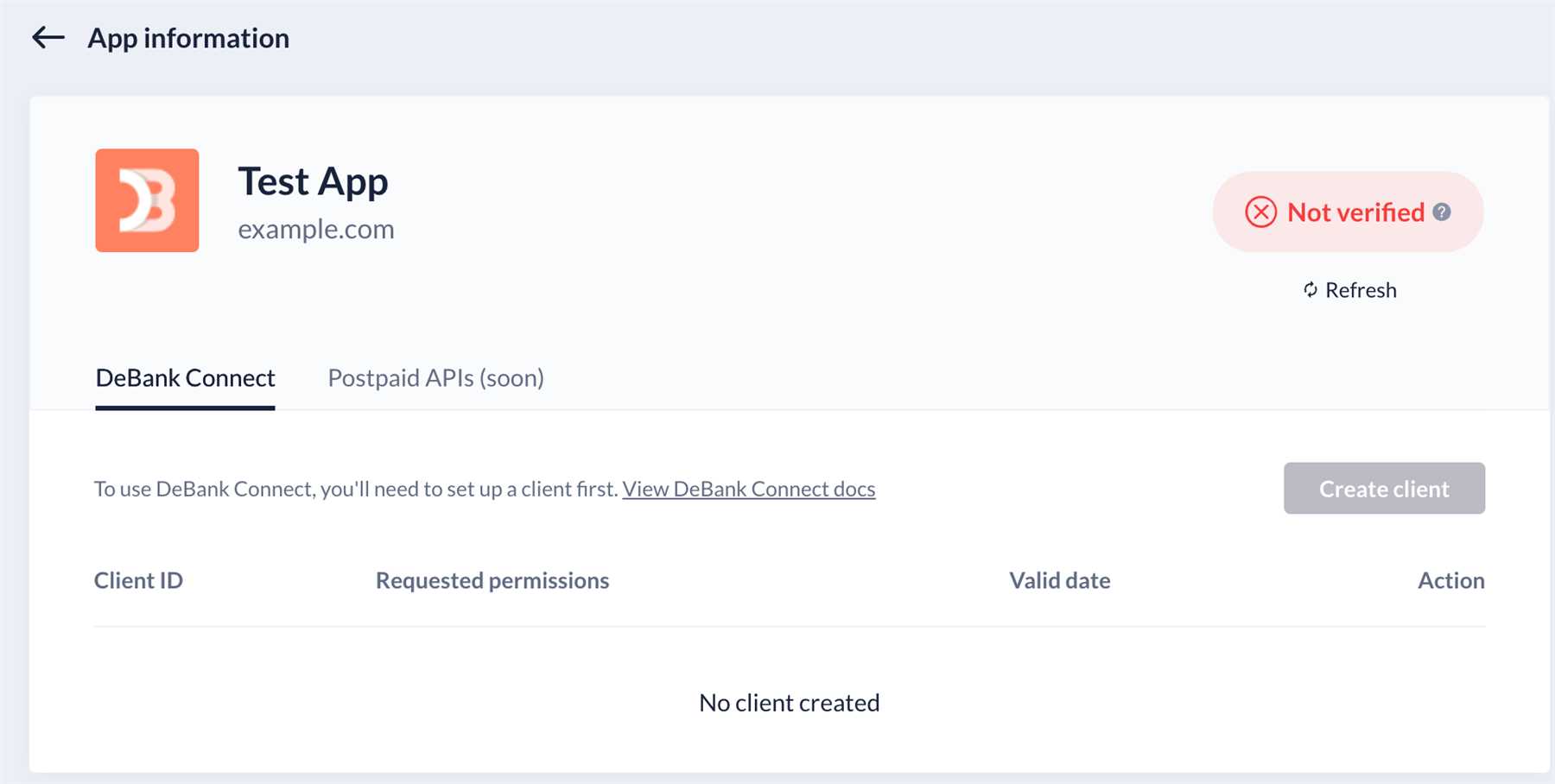
In today’s digital world, online security is of utmost importance. With an increasing number of hackers and cybercriminals targeting individuals and organizations, it is crucial to take steps to protect our sensitive personal information. One such step is the implementation of two-factor authentication (2FA) for login processes.
Debank, a leading online banking platform, has recognized the significance of 2FA and has made it an essential part of their login procedures. And for good reason – 2FA provides an extra layer of protection by requiring users to go through a two-step verification process to access their accounts.
This two-step process typically involves entering a password, followed by a unique code or token that is sent to the user’s smartphone or email. This means that even if a hacker manages to obtain a user’s password, they would still be unable to gain access without the secondary verification code.
The importance of 2FA cannot be overstated. With the prevalence of social engineering attacks, where hackers manipulate individuals into revealing their login credentials, relying solely on passwords is no longer sufficient. Two-factor authentication significantly reduces the chances of unauthorized access, providing peace of mind to users and minimizing the risk of identity theft or financial loss.
Enhancing Security for Debank Login
Debank is a popular online platform that provides users with a wide range of financial services. In order to ensure the safety and security of user accounts, Debank has implemented a two-factor authentication (2FA) system for login. This additional layer of security helps protect users’ sensitive information from unauthorized access.
With 2FA, users are required to provide two pieces of identification to log in to their accounts. The first factor is typically a password that the user knows, and the second factor is a unique, time-sensitive code that is sent to the user’s registered mobile device. This code must be entered correctly to gain access to the account.
Benefits of Two-Factor Authentication for Debank Login
Two-factor authentication offers several key benefits for Debank login:
- Stronger Security: By requiring an additional form of identification, 2FA significantly reduces the risk of unauthorized access to user accounts. Even if a hacker manages to obtain a user’s password, they will still need the second factor (the time-sensitive code) in order to gain access.
- Protection from Phishing Attacks: 2FA adds an extra layer of protection against phishing attacks. Since the time-sensitive code is sent directly to the user’s registered mobile device, hackers who attempt to impersonate Debank’s login page will not be able to obtain the necessary code to access the account.
- Peace of Mind: By implementing two-factor authentication, Debank provides its users with peace of mind, knowing that their accounts are protected against unauthorized access.
Conclusion
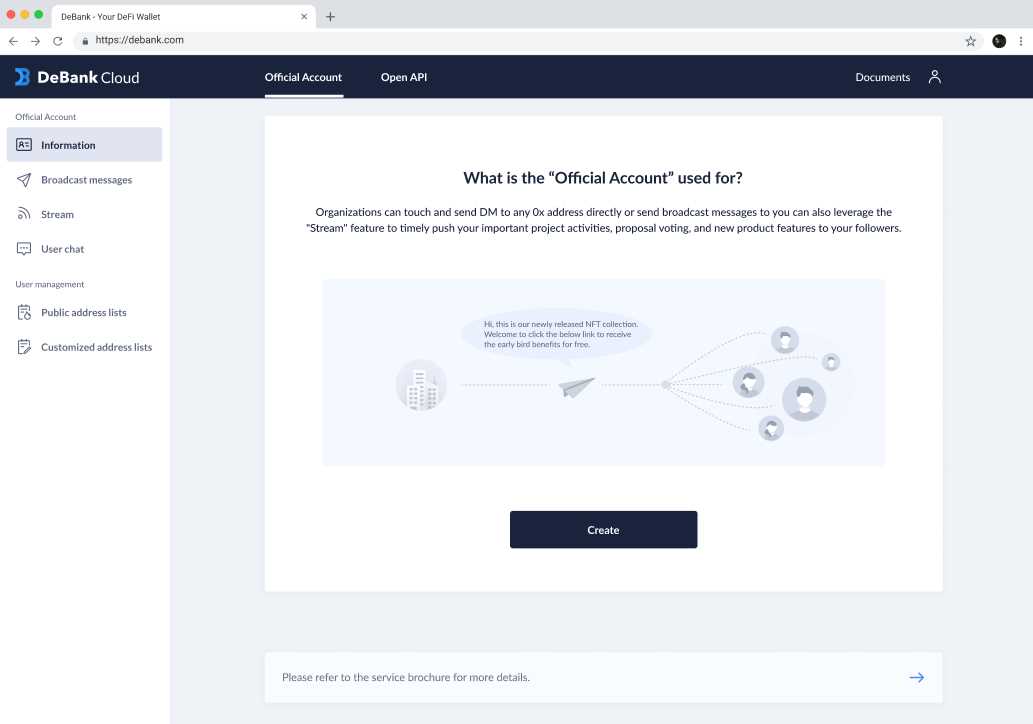
Enhancing security for Debank login is crucial in order to protect users’ valuable financial information. The implementation of two-factor authentication provides an additional layer of protection, ensuring that only authorized individuals can access user accounts. To learn more about Debank and its security measures, please visit the official Debank website.
The Importance of Two-Factor Authentication
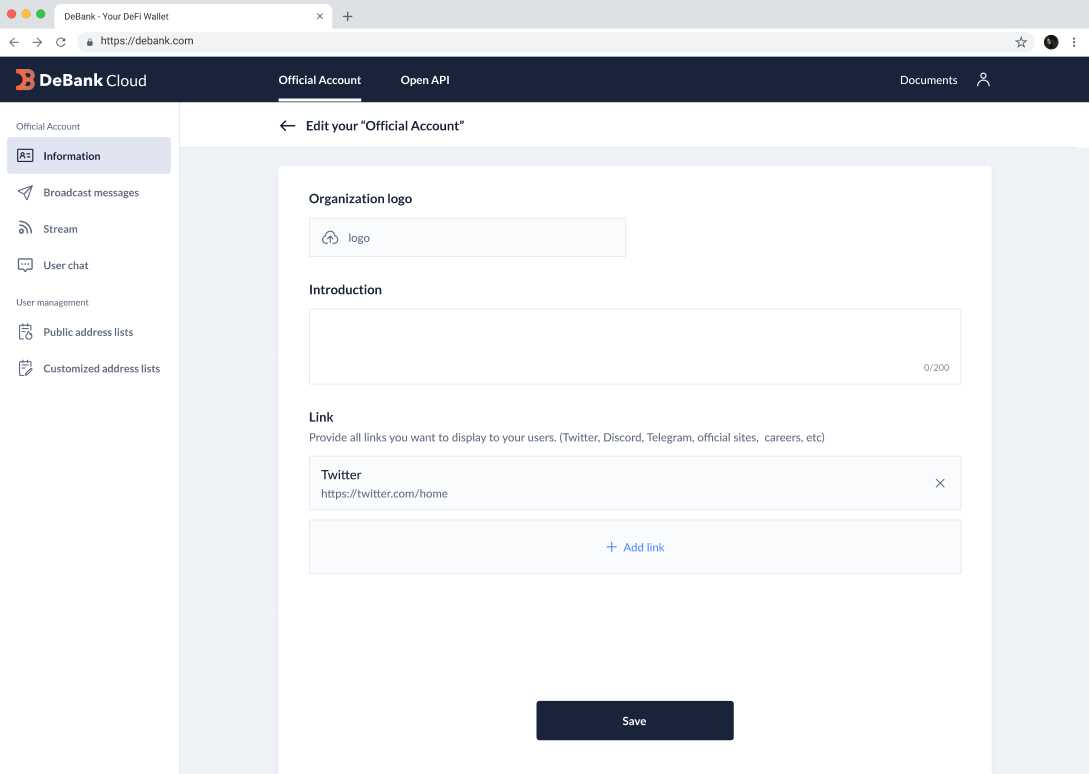
In today’s digital age, where cyber threats and attacks are on the rise, it has become increasingly essential to safeguard our online accounts and sensitive information. Two-factor authentication (2FA) is a critical security measure that provides an extra layer of protection by adding an additional step to the login process.
Enhanced Security
By implementing two-factor authentication, users can significantly enhance the security of their online accounts. With traditional password-based authentication, a single login credential is often the only barrier between hackers and unauthorized access to personal data or financial information. However, with 2FA, even if a hacker manages to obtain the login credentials, they will still need an additional verification factor, such as a one-time password generated on a mobile device, to gain access to the account. This extra layer of security makes it much more difficult for unauthorized individuals to breach the account.
Protection Against Data Breaches
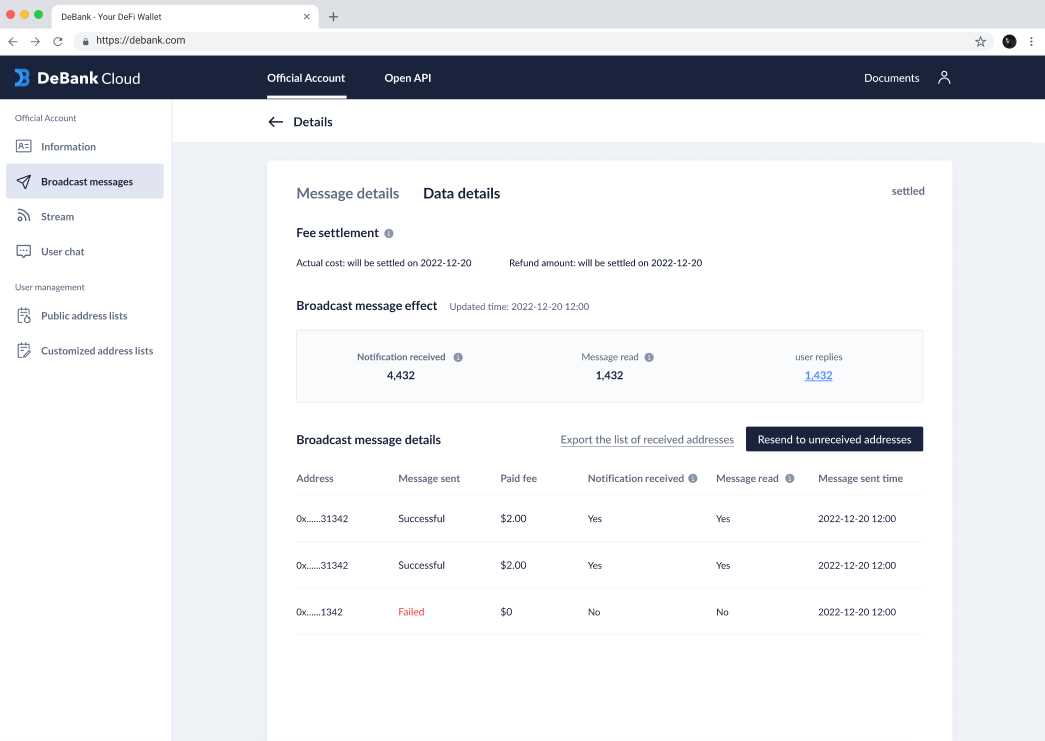
Two-factor authentication is an effective measure to protect against data breaches. In the event of a data breach where login credentials are compromised, having 2FA enabled can significantly reduce the risk of unauthorized access to the account. Since the hacker would need the additional verification factor, even if they have the username and password, the chances of them successfully gaining access to the account are greatly minimized. This added protection is crucial, especially considering the increasing number of high-profile data breaches occurring worldwide.
Convenience and Ease of Use
Despite the added layer of security, two-factor authentication is relatively easy to use and does not introduce significant inconvenience for users. With various options such as SMS verification codes, email notifications, or authentication apps, users can choose the most convenient method that suits their preferences. Once set up, the extra step of providing the verification code only takes a few seconds, but it can provide significant peace of mind knowing that their accounts are well-protected.
In conclusion, two-factor authentication is a vital security measure that brings enhanced security, protection against data breaches, and convenience for users. By implementing 2FA, individuals can significantly reduce the risk of unauthorized access to their online accounts and ensure the safety of their sensitive information.
Preventing Unauthorized Access with Two-Factor Authentication
Unauthorized access to personal accounts and sensitive data is a serious concern in today’s digital world. Hackers are constantly evolving their techniques, making it crucial for individuals and businesses to enhance their security measures. One highly effective method of preventing unauthorized access is through the implementation of two-factor authentication.
How Two-Factor Authentication Works
Two-factor authentication adds an extra layer of security to the login process by requiring users to provide two separate pieces of identification. The first factor is typically something the user knows, such as a password. The second factor is something the user possesses, such as a mobile device or hardware token. When attempting to log in, users must provide both factors to gain access.
This additional step significantly reduces the risk of unauthorized access, as even if a hacker manages to obtain a user’s password, they would still need physical possession of the second factor to successfully log in.
The Advantages of Two-Factor Authentication
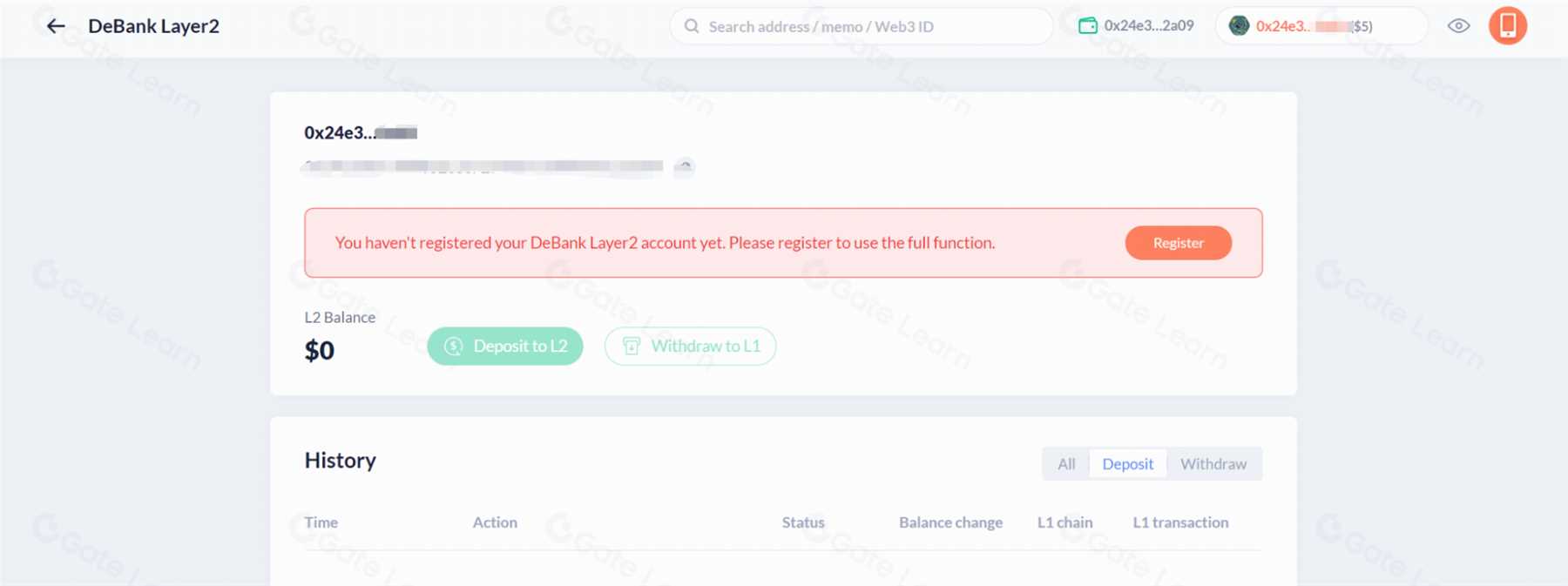
Implementing two-factor authentication offers several key advantages in preventing unauthorized access. Firstly, it adds an additional layer of security that is much more difficult for hackers to bypass. Even if they manage to crack a user’s password, they would still require the second factor, which is typically unique to the user and not easily replicable.
Moreover, two-factor authentication provides a higher level of user verification, reducing the risk of fraudulent login attempts. This is especially important for sensitive accounts, such as those containing financial or personal information.
Additionally, two-factor authentication can help protect against various types of attacks, such as phishing or keylogging. Even if a user unknowingly enters their password into a malicious website or logs in from a compromised device, the second factor would prevent the unauthorized access.
Overall, two-factor authentication serves as a powerful deterrent to potential hackers, significantly reducing the risk of unauthorized access to personal accounts and sensitive data. By implementing this security measure, individuals and businesses can enhance their online security and protect themselves from the ever-present threat of cyberattacks.
Securing Sensitive Data with Two-Factor Authentication
Two-Factor Authentication (2FA) is becoming increasingly important in today’s digital world. With the rising number of data breaches and cyberattacks, protecting sensitive data has become a top priority for businesses and individuals alike.
2FA is a security measure that adds an extra layer of protection to your online accounts. It requires users to provide two forms of identification to verify their identity. These can include something you know (such as a password) and something you have (such as a fingerprint or a unique code sent to your smartphone).
By requiring both these factors, 2FA significantly reduces the risk of unauthorized access to sensitive data. Even if a hacker manages to obtain your password, they would still need the second factor to gain access to your account.
Many popular online platforms and services have already implemented 2FA as a standard security feature. This includes email providers, social media platforms, banks, and more. It is highly recommended to enable 2FA on all your accounts that support it.
When it comes to securing sensitive data, 2FA plays a crucial role. It acts as a deterrent for hackers and makes it much harder for them to gain unauthorized access. This is particularly important for financial institutions, healthcare organizations, and any business that handles sensitive customer information.
Implementing 2FA not only safeguards sensitive data but also helps build trust with your customers. It shows that you take security seriously and are committed to protecting their information. This can be a crucial factor in gaining and retaining customers’ trust.
Furthermore, 2FA can also protect against brute-force attacks, where hackers attempt to log in to an account by guessing the password. With 2FA enabled, even if they manage to guess the correct password, they would still need the second factor to gain access, making it much more difficult for them to succeed.
In conclusion, adopting 2FA is an essential step in securing sensitive data. It provides an additional layer of protection and greatly reduces the risk of unauthorized access. By implementing 2FA, businesses and individuals can enhance their security posture and protect their valuable information.
Note: Remember to choose strong and unique passwords and never share your 2FA codes or tokens with anyone, as they are the key to accessing your accounts.
Protecting User Accounts with Two-Factor Authentication
Two-factor authentication (2FA) is an essential security measure for protecting user accounts from unauthorized access. By requiring users to provide two forms of identification, it adds an extra layer of security beyond just a username and password.
With traditional login methods, the security of user accounts relies solely on the strength and secrecy of a password. Unfortunately, passwords can be easily guessed or stolen through techniques such as phishing or brute-force attacks. Once a password is compromised, an attacker can gain access to a user’s account and potentially exploit sensitive information or carry out malicious activities.
Two-factor authentication mitigates this risk by introducing a second step in the login process. In addition to providing a password, users must provide a second form of identification, such as a unique code sent to their mobile device or a fingerprint scan. This adds an extra layer of protection, as even if an attacker manages to obtain a user’s password, they would still need the second factor to gain access to the account.
Benefits of Two-Factor Authentication:
1. Improved Account Security: Two-factor authentication significantly enhances the security of user accounts by requiring an additional form of identification. This makes it much more difficult for unauthorized individuals to gain access.
2. Protection Against Password Theft: Since passwords alone are not enough to access an account, two-factor authentication adds an extra layer of protection against password theft. Even if a password is compromised, the second factor is still required to log in.
3. Increased User Trust: By implementing two-factor authentication, companies demonstrate their commitment to protecting user accounts and sensitive information. This helps build trust among users, who feel more confident that their data is secure.
Conclusion:
Two-factor authentication is an essential security measure that provides an additional layer of protection for user accounts. By requiring users to provide two forms of identification, it significantly reduces the risk of unauthorized access and password theft. Implementing this security measure not only improves account security but also boosts user trust and confidence in the platform.
Adding an Extra Layer of Security with Two-Factor Authentication
In today’s digital landscape, online security has become more important than ever. With the increasing number of cyber threats and data breaches, it is crucial to take steps to protect your personal information and accounts. One effective way of doing this is by using two-factor authentication (2FA) for your Debank login.
What is Two-Factor Authentication?
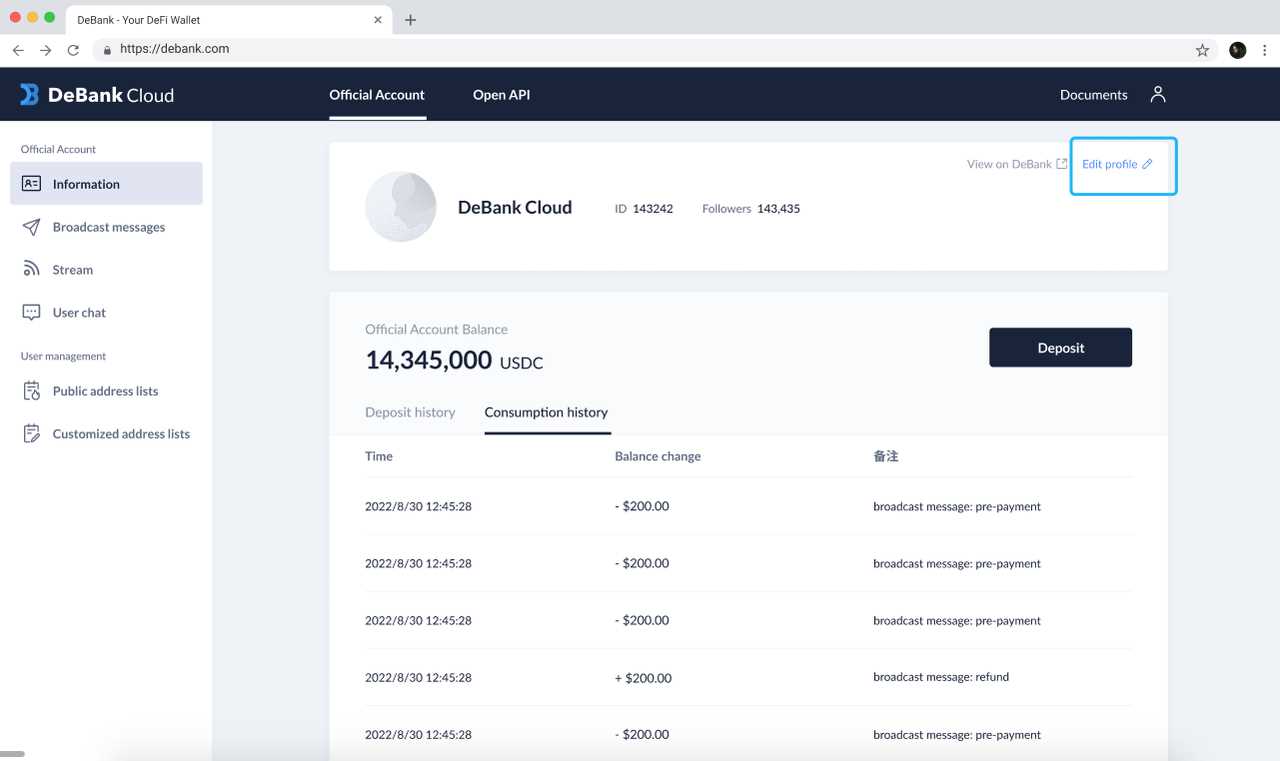

Two-factor authentication is a security measure that adds an extra layer of protection to your online accounts. In addition to your username and password, 2FA requires you to provide a second piece of information to verify your identity. This can be in the form of a verification code sent to your mobile device, a fingerprint scan, or a security key.
Why is Two-Factor Authentication Essential for Debank Login?
Debank is an online platform where users can access their financial information, make transactions, and manage their accounts. Given the sensitive nature of the data involved, it is crucial to ensure that only authorized individuals can access it. Two-factor authentication helps achieve this by making it significantly harder for hackers to gain unauthorized access, even if they have obtained your username and password.
By requiring a second piece of information, 2FA adds an extra layer of security that can help prevent unauthorized access. Even if your password is compromised, the second factor acts as a safeguard, ensuring that only you, the account owner, can successfully log in.
Furthermore, Debank’s implementation of two-factor authentication provides a seamless user experience. Once enabled, you can choose the authentication method that suits you best, whether it’s receiving a text message with a one-time code, using an authentication app, or utilizing a hardware token. This flexibility allows you to choose the method that is most convenient and secure for you.
| Benefits of Two-Factor Authentication for Debank Login |
|---|
| Enhanced security for your personal and financial information. |
| Protection against unauthorized access to your account. |
| Added peace of mind knowing that your data is secure. |
| Easy to set up and use, with multiple authentication options available. |
In conclusion, two-factor authentication is an essential security measure for your Debank login. By adding an extra layer of protection, you can significantly reduce the risk of unauthorized access to your personal and financial information. Enable 2FA today and enjoy enhanced security and peace of mind.
Minimizing the Risk of Account Breaches with Two-Factor Authentication

Two-factor authentication (2FA) is an essential security measure that can greatly minimize the risk of account breaches. By requiring users to provide two separate forms of identification, it adds an extra layer of protection to online accounts.
One-factor authentication, which typically involves only a password, has become increasingly vulnerable to attacks. With the rise of sophisticated hacking techniques, malicious actors can easily crack weak passwords or even steal them through phishing scams or data breaches.
However, two-factor authentication adds an additional level of security by requiring users to provide a second piece of information, typically something they possess or something inherent to them. This could be a unique code generated by a mobile app, a fingerprint scan, or even a physical token.
By implementing 2FA, companies can significantly reduce the risk of unauthorized access to user accounts. Even if an attacker manages to obtain a user’s password, they would still need the second form of identification to gain access. This makes it much more difficult for hackers to breach accounts and steal sensitive information.
Furthermore, two-factor authentication provides an added safeguard against credential stuffing attacks, where hackers use automated tools to input stolen usernames and passwords in an attempt to gain unauthorized access. With 2FA in place, even if the login credentials are valid, the attacker would still need the second factor to successfully log in.
In recent years, there have been numerous high-profile data breaches that have exposed the personal information of millions of users. These breaches have highlighted the importance of implementing strong security measures, such as two-factor authentication, to protect user accounts.
Overall, two-factor authentication plays a crucial role in minimizing the risk of account breaches. By requiring users to provide an additional form of identification, it adds an extra layer of security that can significantly deter hackers. As the threat landscape continues to evolve, implementing 2FA is becoming increasingly necessary to safeguard online accounts.
Increasing Trust and Confidence in Debank’s Login Process
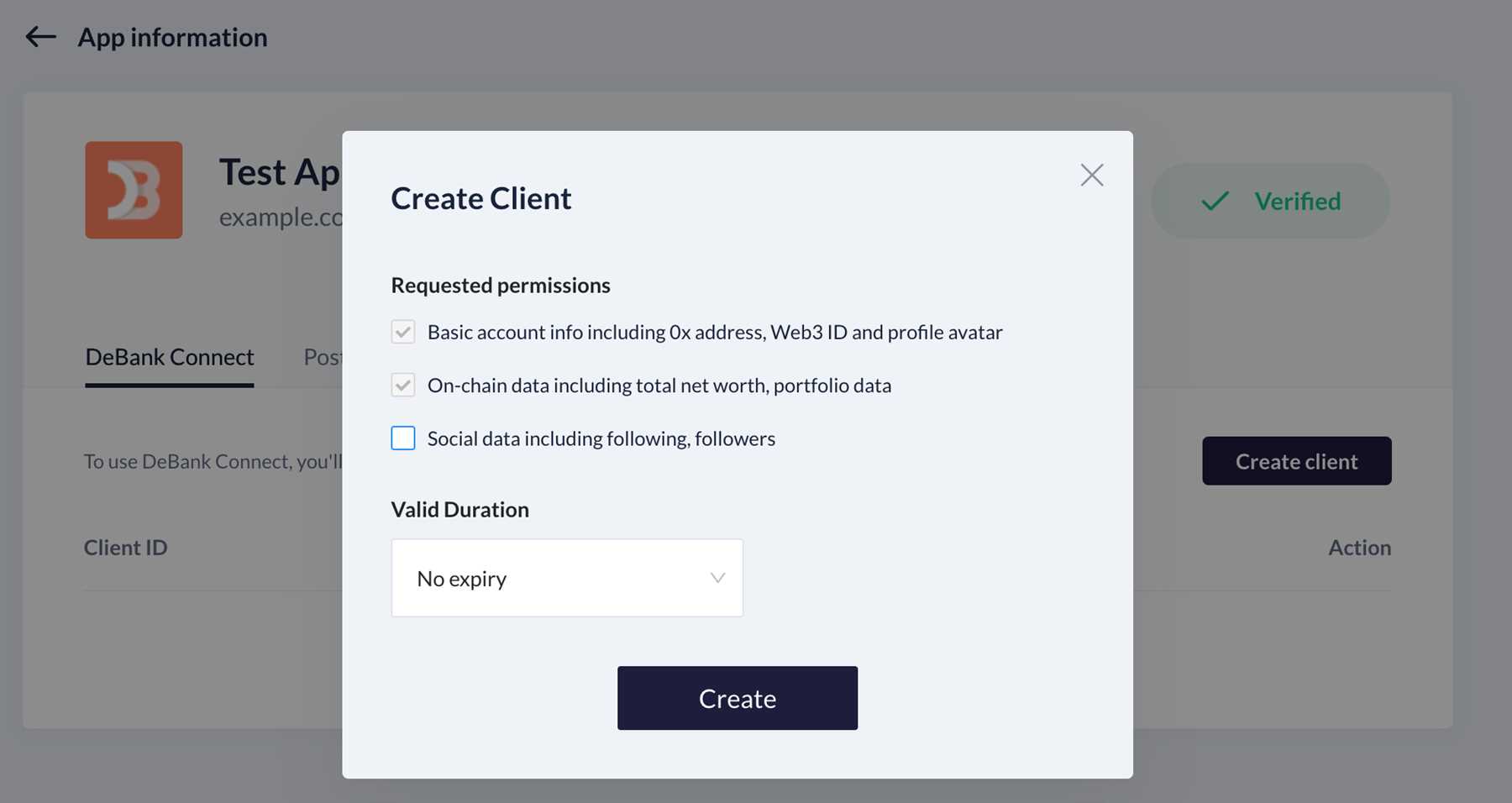
Two-factor authentication (2FA) plays a pivotal role in enhancing the login process of Debank, a leading financial platform. By implementing 2FA, Debank takes decisive steps towards safeguarding user accounts and sensitive information, instilling trust and confidence among its users.
With the increasing prevalence of cyber threats and hacking attempts, traditional password-based logins have become vulnerable to attacks. Hackers can easily crack weak passwords and gain unauthorized access to user accounts. This poses a significant risk to the security and privacy of users’ financial data.
However, Debank recognizes the importance of user security and proactively addresses these concerns by implementing 2FA. By requiring users to provide a secondary authentication factor, such as a unique code generated on a mobile device or an email verification, Debank adds an extra layer of protection to its login process.
With the integration of 2FA, Debank assures its users that their accounts are secure even if their passwords are compromised. Even if hackers manage to obtain password information, they won’t be able to access the account without the secondary authentication factor. This significantly reduces the risk of unauthorized access and mitigates the potential damage caused by cyber attacks.
Furthermore, 2FA acts as a deterrent for cybercriminals, making it exponentially more difficult for them to breach accounts. The additional step of providing a secondary authentication factor adds complexity to the login process, making automated hacking tools ineffective. This reinforces the trust and confidence users have in Debank’s commitment to their security.
By implementing 2FA, Debank demonstrates its dedication to the protection and privacy of user data. This commitment not only enhances the overall security of the platform but also builds trust among users, contributing to a positive user experience. Users can feel confident that their financial information is safe and that Debank has taken every possible measure to protect their accounts.
In conclusion, two-factor authentication plays a crucial role in increasing trust and confidence in Debank’s login process. By implementing this additional layer of security, Debank safeguards user accounts against hacking attempts, enhances the overall user experience, and fosters a sense of trust among its users. With 2FA in place, Debank is leading the way in ensuring the security and privacy of financial data in the digital realm.
Meeting Industry Standards with Two-Factor Authentication
The importance of cybersecurity cannot be overstated in today’s digital landscape. With cyber threats becoming more sophisticated, it is crucial for organizations to implement robust security measures to protect sensitive data. One such measure is two-factor authentication (2FA), which adds an extra layer of security to login processes.
What is Two-Factor Authentication?
Two-factor authentication is a security method that requires users to provide two different pieces of evidence to authenticate their identity. Typically, these factors fall into three categories: something you know (e.g., a password), something you have (e.g., a mobile device), and something you are (e.g., biometric data like fingerprints).
Why is Two-Factor Authentication Essential for Industry Standards?
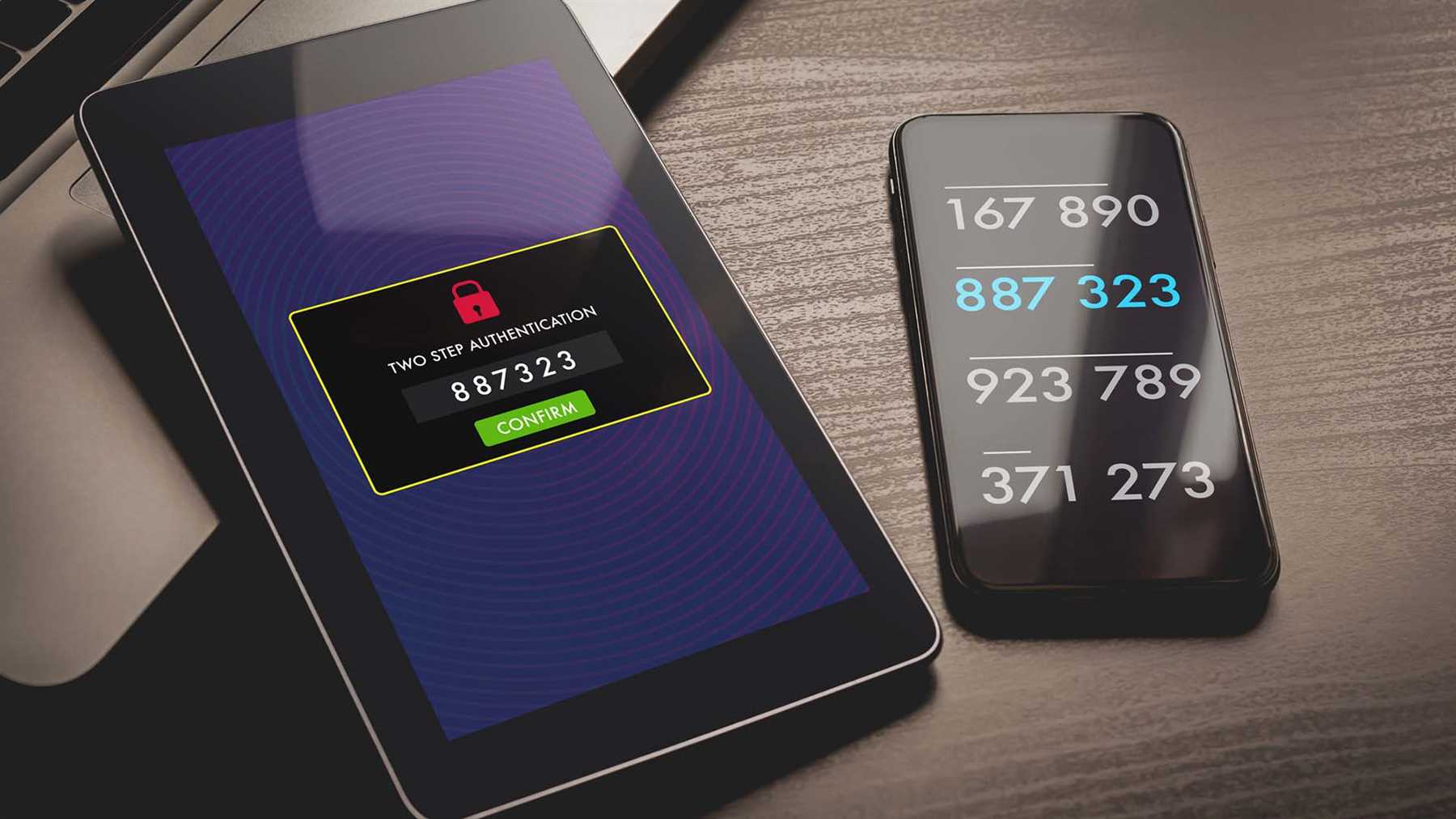
Many industry standards, regulations, and certification processes now require or highly recommend the use of two-factor authentication. Implementing 2FA helps organizations comply with these requirements and demonstrates a commitment to protecting user data.
For example, in the financial industry, compliance with regulations such as the Payment Card Industry Data Security Standard (PCI DSS) is mandatory. This standard requires organizations that handle credit cardholder data to implement strong access controls, including two-factor authentication.
Similarly, in healthcare, the Health Insurance Portability and Accountability Act (HIPAA) mandates the use of two-factor authentication to safeguard sensitive patient information.
By implementing two-factor authentication, organizations can align themselves with industry standards, enhance their security posture, and build trust with their users.
Ensuring a Seamless User Experience with Two-Factor Authentication
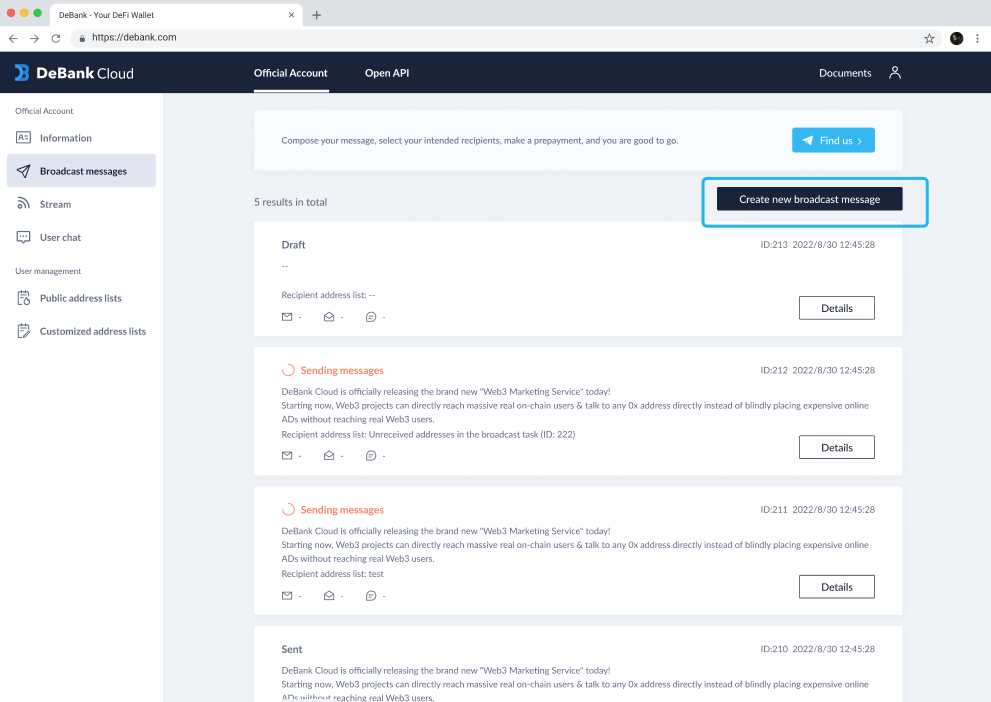
Two-Factor Authentication (2FA) is an essential security measure that helps protect users’ accounts from unauthorized access. While its primary goal is to enhance security, it is equally important to ensure that the implementation of 2FA does not hinder the user experience. By combining security and user experience, organizations can create a seamless and secure login process for their users.
1. Simple and Intuitive Design
One way to ensure a seamless user experience with 2FA is by implementing a simple and intuitive design. Users should be able to understand the purpose of 2FA and how to navigate through the authentication process without confusion. Clear and concise instructions should be provided at each step, guiding users on how to enter their authentication codes or complete other necessary actions.
2. Multiple Authentication Methods

Offering multiple authentication methods can also contribute to a seamless user experience. While traditional methods, such as SMS verification codes, are commonly used, providing users with alternative options can accommodate their preferences and accessibility needs. Options like authenticator apps, biometric authentication, or hardware tokens can offer a more convenient and user-friendly experience.
3. Remember Device Functionality
Taking advantage of the “Remember Device” functionality can streamline the login process for users. Once a device is recognized and trusted, users can bypass the additional authentication steps for subsequent logins. This feature enhances user convenience without compromising security, as it requires users to re-authenticate on new or unrecognized devices.
4. Educating Users
Educating users about the benefits and importance of 2FA can help alleviate any concerns or hesitations they may have. Clear and concise explanations about how 2FA works, the level of security it provides, and its role in protecting their accounts can increase user confidence and reduce any perceived inconvenience. Providing resources such as FAQs, tutorials, and customer support can further assist users in understanding and embracing 2FA.
In conclusion, ensuring a seamless user experience with 2FA is vital in maintaining a balance between security and convenience for users. By implementing a simple and intuitive design, offering multiple authentication methods, utilizing the “Remember Device” functionality, and educating users, organizations can create a smooth and secure login process that encourages user adoption and trust in their platform.
FAQ:,
What is two-factor authentication?
Two-factor authentication is a security measure that adds an extra layer of protection to the login process. It requires users to provide two types of identification to verify their identity.
How does two-factor authentication work?
Two-factor authentication works by requiring users to provide two different types of identification. This can include something the user knows, such as a password, and something the user has, such as a fingerprint or a code sent to their mobile device.
Why is two-factor authentication essential for Debank login?
Two-factor authentication is essential for Debank login because it greatly enhances the security of user accounts. It adds an extra layer of protection to prevent unauthorized access, even if a user’s password is compromised. This helps to keep users’ personal and financial information safe.




